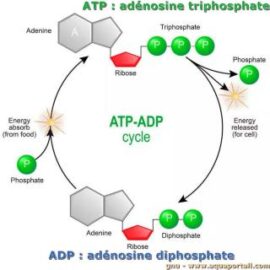
More broadly, the cashflow from operations is prepared by accounting for cash receipts and payments of the cash in case of the direct method. The indirect cash flow method makes reporting cash movements in and out of the business easier for accruals basis accounting. The cash flow from operating activities is the only section of the statement of cash flows that will change in presentation under the direct and indirect methods.
- In this situation, a disadvantage of the direct method is the time it takes to capture and record information necessary for the cash flow statement.
- Indirect cash flow takes the net income the company generated in a period and adds or subtracts any changes in assets and liabilities accounts resulting in an implied cash flow.
- These added hoops to jump through are enough to persuade many businesses to eschew the direct method in favor of the indirect method.
- But because it’s based on adjustments, one of its disadvantages is that it doesn’t offer the same visibility into cash transactions or break down their sources.
- It tells you how much your business received cash and how much cash was paid during a definite period.
- In the direct method, you use the cash flow information from the operations segment of the company’s cash flow statement.
However, the Financial Accounting Standards Board (FASB) prefers companies use the direct method as it offers a clearer picture of cash flows in and out of a business. However, if the direct method is used, it is still recommended to do a reconciliation of the cash flow statement to the balance sheet. However, the direct method completely ignores the application of non-cash transactions such as the treatment of the depreciation expense and the impact on the resulting cash flow. Basis the requirement of compliance and reporting, the business has to choose either one of the methods to arrive at the cash flow from operations. You can use both the direct and indirect method to arrive at the same conclusion.
Direct Vs Indirect Cash Flow Methods Which Is Better ?
You arrive at these numbers by calculating the difference between the beginning and ending balances of each account in the balance sheet. This can help you determine the net decrease or increase in cash in these accounts. Once again, you need to remember that the net cash flow from operations remains the same irrespective of the method used; it is just derived differently. IAS 7 was reissued in December 1992, retitled in September 2007, and is operative for financial statements covering periods beginning on or after 1 January 1994. Once you’ve considered what you’re trying to do with your cash flow statement, one method will make more sense. Whether you choose to use the indirect or direct method will affect the way you operate your cash flow and the story you tell around it.

Either is acceptable according to the generally accepted accounting principles and International Financial Reporting Standards (GAAP & IFRS) guidelines. Smaller organizations with a limited number of transactions each month can likely manage the level of tracking and detail that the direct method requires for accuracy. The indirect method is preferred by the International Financial Reporting Standards (IFRS), making it a common choice both among small and large companies for compliance purposes. You do not need to go through each transaction during the period to determine its impact on the cash balance for the business. This excludes any items like accrued expenses or earned revenues that have not yet resulted in a cash outflow or inflow.
Direct method cash flow vs indirect method cash flow: How they’re different
This same amount would also appear on the balance sheet in accounts receivable. Companies that use accrual accounting do not also collect and store transactional information per customer or supplier on a cash basis. In contrast, the direct method only displays cash transactions and includes operating, financing, and investing cash flow.
- The cash flow from operating activities is the only section of the statement of cash flows that will change in presentation under the direct and indirect methods.
- You can use both the direct and indirect method to arrive at the same conclusion.
- The indirect method may be easier for you, as the direct method requires additional account information and takes more time for you to calculate, but finding the right method can help you discover your business’s rhythm.
- The direct method is an accounting treatment that nets cash inflow and outflow to deduce total cash flow.
- Cash shortages can lead to bankruptcy, whereas excess cash might indicate a need to take steps such as increasing investments, paying down debt, increasing executive salaries or distributing dividends.
- This is in comparison to the tedious nature of the direct method, where preparers need to monitor and document each cash inflow and outflow for the business.
This content is presented “as is,” and is not intended to provide tax, legal or financial advice. Though it is the more popular method, there are still some potential drawbacks to keep in mind for the indirect method. For these reasons, the indirect method tends to be the industry standard over the direct method. The more complex your business’s finances are, the more you’re opening yourself up to errors and complications.
Understanding the Direct Method
Under the IFRS, interest and dividends can be grouped as operating, investing, or financing. Under Canadian GAAP, if interest and dividends are shown on the income statement, they must also be shown as cash flows from operations, not investing or financing. The indirect method, on the other hand, starts with net income from the income statement and makes adjustments to convert the accrual-based net income to the operating cash flow.
Each method has its own advantages and disadvantages that it’s important to be aware of when making your decision. Harold Averkamp (CPA, MBA) has worked as a university accounting instructor, accountant, and consultant for more than 25 years.
The direct method and the indirect method are alternative ways to present information in an organization’s statement of cash flows. The difference between these methods lies in the presentation of information within the cash flows from operating activities section of the statement. There are no presentation differences avoid strategic drift in your 3pl relationship with a sound governance structure between the methods in the other two sections of the statement, which are the cash flows from investing activities and cash flows from financing activities. The cash flow statement is generally regarded as the third most critical financial statement after the balance sheet and the income statement.
Calculating Cash Flow
Once you’re done with the adjustments, you end up with a final closing bank position. Start your 30-day free trial with Finmark today to level up your financial planning. Additionally, the regulations your business is subject to could determine which method you will need to utilize. Discussed options for my business with Brian and he was very helpful in suggesting how best to handle it. As you’ve seen above, for which method to use, and whichever you opt for, there will be negatives that balance out the positives. However, there will be scenarios where it will be advantageous to choose one over the other.
These are the actual cash inflows that Gatsby generated from the sale of goods or rendering of services. Besides, we have various cash outflows to consider, such as payments to suppliers, employees, and all sorts of operating and non-operating expenses. You will find sample IFRS statements of cash flows in our Model IFRS financial statements. The Statement of Cash Flows for a company is merely a document that explains the cash flow in a formal financial statement.
What is the indirect cash flow method?
Here are some of the main benefits that you’ll find from using the direct method for cash flow statements. This article examines the cash flow statement—and, specifically, the minutiae of direct vs. indirect cash flow. Using the indirect method could also lead to issues with the FASB and International Accounting Standards Board, which tend to prefer that companies employ direct cash flow reporting for clarity and transparency. The indirect method, by contrast, means reports are often easier to prepare as businesses typically already keep records on an accrual basis, which provides a better overview of the ebb and flow of activity.

There would need to be a reduction from net income on the cash flow statement in the amount of the $500 increase to accounts receivable due to this sale. Under the indirect method, the cash flows statement will present net income on the first line. The following lines will show increases and decreases in asset and liability accounts, and these items will be added to or subtracted from net income based on the cash impact of the item. Learning the difference between direct vs. indirect cash flow is not as complicated as one may think.
There are several key differences between the direct method and the indirect method. After this, you can add the change in cash to the cash at the beginning of the period to arrive at the final cash balance. Never take your eyes off the cash flow because it’s the lifeblood of business. – Sir Richard Branson, business magnate, investor, author, and philanthropist.
You must subtract the most recent dollar amount to determine the accounts payable from the previous quarterly or yearly dollar amount. The International Financial Reporting Standards (or IFRS) is attempting to establish a global framework to ensure worldwide accounting consistencies. GAAP (or United States Generally Accepted Accounting Principles) and the IFRS regarding the treatment of specific cash flow-related accounting and reporting. On the other hand, the indirect method is much easier for the finance team to create but harder for outside readers to interpret. It might be a better option for leaner teams who don’t have the time or resources to follow the direct method. In short, the direct method is helpful when you need to make it easy for other people—like investors and stakeholders—to understand your cash flow.
Under the direct cash flow method, the values of the accounts in your operations section are recorded on the cash basis. After listing the cash receipts and payments, subtract the outgoing cash from the incoming cash to arrive at the net cash flow for operating activities. Once you add the cash value for investing and financing activities, you can see the net cash increase or decrease. Indirect expenses include equipment-related costs such as insurance or depreciation. For example, the finance department may need to purchase new office furniture for an upcoming holiday party.
ONEOK Announces Filing of Definitive Proxy Statement in … – PR Newswire
ONEOK Announces Filing of Definitive Proxy Statement in ….
Posted: Tue, 25 Jul 2023 12:14:00 GMT [source]
It adjusts for non-cash items, such as depreciation, amortization, and changes in working capital, to derive the operating cash flow. The indirect method essentially reconciles the net income to cash flows from operating activities. It is widely used because it is less complex and does not require a detailed breakdown of individual cash transactions. Most companies, especially publicly traded ones, use the indirect method as it is easier to implement. The three main financial statements are the balance sheet, income statement, and cash flow statement.